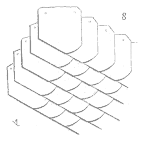
MAKE USE OF A PROBABILITY DISTRIBUTION CURVE OF MAINTENANCE KPIS TO SHOW WHETHER YOUR MAINTENANCE PERFORMANCE IMPROVEMENT EFFORTS ARE WORKING. A KPI PROBABILITY DISTRIBUTION CURVE GIVES NEW INSIGHTS INTO YOUR MAINTENANCE PERFORMANCE.
—
Using a distribution curve of maintenance KPIs as a new maintenance performance measure was what we recommended to this Maintenance Manager.
[Read more…]












